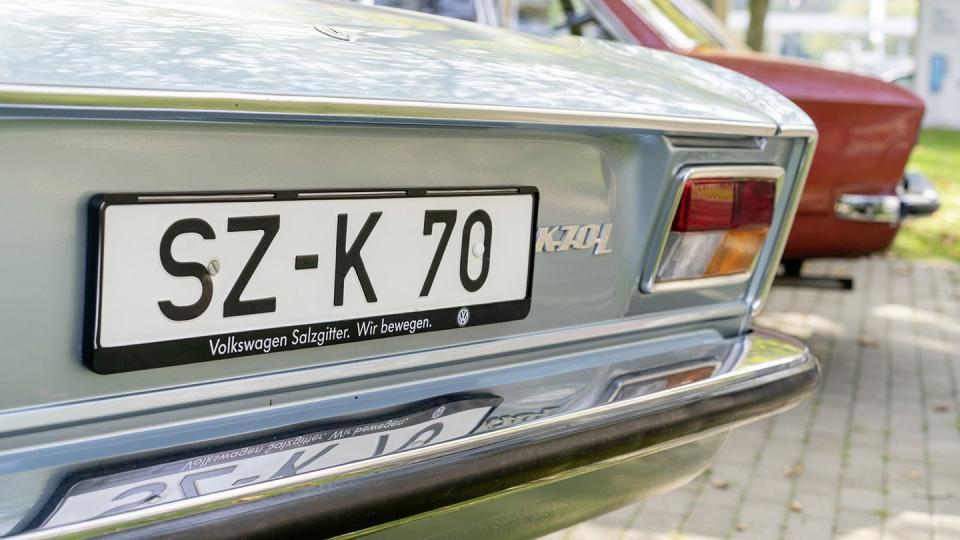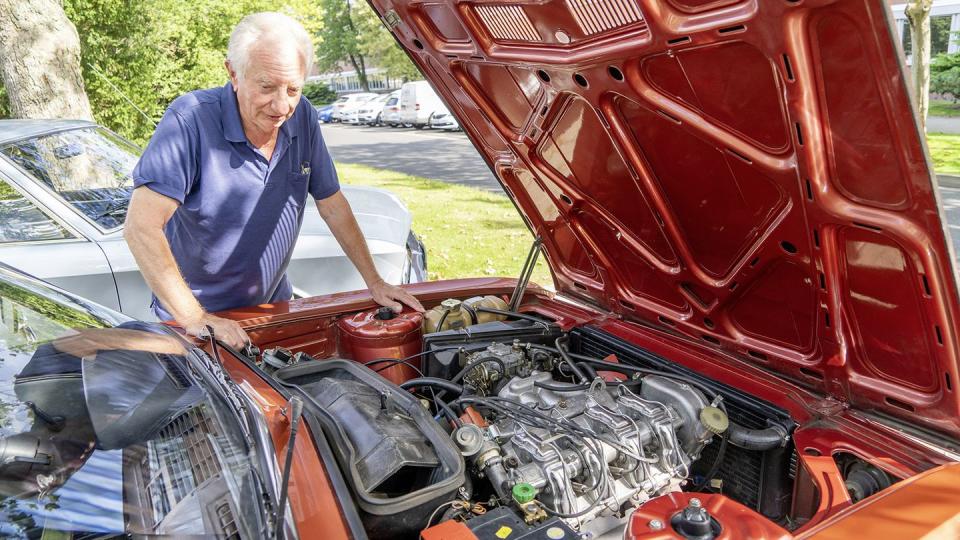Volkswagen K70 Sedan Turns 50, but Odds Are You've Never Seen One

Volkswagen was a very different company in 1970. In the U.S. it was still known primarily for two vehicles: the Bus and the Beetle, both of which were rear-engined, air-cooled, rear-whee-drive vehicles. And both were now a bit dated stylistically by the late 1960s, even though a second-gen Bus had debuted in 1967. The rest of the Volkswagen range at the time was also small and air-cooled, with cars like the Type 3.
But the K70 sought to change all that. The model debuted on October 20, 1970, at a press conference held in Salzgitter, Germany, ushering in a new era of design and engineering for Wolfsburg.
"With the water-cooled engine and front-wheel drive of the K70, Volkswagen accomplished a changeover to a drive concept that was entirely new for the brand and would later achieve success with the Passat and Golf," the automaker says. "The K70 had a state-of-the-art chassis with independent suspension. The extraordinarily long wheelbase allowed an especially spacious interior and provided very good handling."

On the outside the K70 introduced an entirely new design language for the automaker with crisp lines, square shaped and a spacious interior. The sedan was designed by Claus Luthe, who also penned the similar NSU Ro80—a car that later set the tone for Audi styling for decades thereafter. Of course, both sedans had been engineered by NSU, which was acquired by VW in 1969.
The unibody K70 sedan featured a spacious and comfortable interior, a long wheelbase with an independent suspension and tidy road manners thanks to rack and pinion steering. The water-cooled engine was up front, a 1.6-liter inline-four initially, good for 74 hp, with a 1.8-liter inline-four arriving in 1973 with 99 hp on tap, all sending power to the front wheels.
All of these features made the K70 compete with larger Opel and BMW sedans of the era something which seemed unthinkable just a few years prior because VW had largely stayed in its own niches, letting the other German automakers build large luxury sedans.
"Despite all the comfort of the K70, one of the main emphases was on active and passive safety," the automaker adds. "Features such as a reinforced passenger compartment, crumple zones at front and rear, a fuel tank at the rear in the protected area and preparation for safety belts on all seats as a standard feature set new standards."

And despite 210,000 examples of the K70 being produced, the sedan was effectively upstaged a bit by the Passat starting in 1973, sold as the Dasher in the U.S., which was derived from an Audi model. But the influence of the K70 is undeniable for VW and for Audi, as it showcased the design language that would define the ranges of both automakers for over 20 years. In a short period of time, the VW range was joined by the Golf, Polo and Scirocco, all of which featured exterior design clearly influenced by the boxy K70.
"The uncluttered design with its clear lines, which is still attractive today, proved to be ground-breaking," VW points out. "The notchback sedan was designed by Claus Luthe, one of the major automobile designers of his time. His design signature is also evident in later Volkswagen models such as the Golf and the Polo."
But for all of its design and engineering influence on VW's lineup, the K70 was never offered stateside and was not a sales hit on its home continent either. So its legacy is a bit two-sided, and perhaps destined to always be overshadowed by the Ro80 and the Passat.
Sign up for comments and let us know your thoughts about the K70.

